25 Points: The Road to Emmaus: Poems
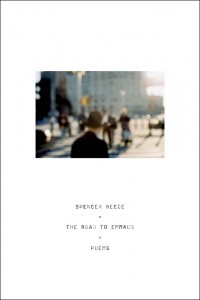 |
The Road to Emmaus: Poems
by Spencer Reece
Farrar, Straus and Giroux, 2014
144 pages / $24.00 buy from Amazon
|
1. I have always had a thing for men of God.
2. Spencer Reece is an Episcopalian minister. Do not let this turn you off. If you do, you will be doing yourself a great disservice. You will be denying yourself something sight unseen.
3. The priest at my father’s funeral was a radical one. His name was Father Pat, and he was a notorious IRA sympathizer. At the service, Father Pat was treated like a rock star. At his own funeral, my father was upstaged.
4. Reece did not become a minister until he was 48 years old. It took him eleven years to write the poems in The Road to Emmaus. I find this to be strangely reassuring; I always feel like I am rushing, trying to make up for lost time.
5. In 2010, Reece served at the only all-girl orphanage in Honduras, Our Little Roses, in San Pedro Sula. San Pedro Sula is the murder capital of the world. At a reading from this book that I attended last week, Reece told a story of a friend’s attempt to raise money for the orphanage from a wealthy benefactress. The woman agreed to make the donation, saying, “How else will Honduras get its maids and prostitutes?”
6. A year after my father’s death, Father Pat was arrested for laundering money for weapons to the IRA.
7. The Road to Emmaus refers to a story in the Gospel of Luke where Jesus makes an appearance to two of his disciples as they leave Jerusalem for the city of Emmaus, two days after Jesus’ crucifixion. The two disciples are leaving Jerusalem, perhaps for good, because of the events surrounding Jesus’ death. A man appears to the disciples on the road; he does not identify himself, and the disciples don’t recognize him. Instead, as he walks with them, the man corrects their misinterpretations about what has transpired; telling them it was all in line with God’s plan. Still not recognizing the man as Jesus, the disciples invite him to eat with them. Later, when they finally recognize him as Jesus, he disappears.
8. Reece describes himself as coming to religion “tentatively.” He told the Poetry Society of America that he feels a connection to T.S Eliot, who was also devout. Like Eliot, many of Reece’s poems mix verse with prose. “When I try to write, his example is never far from my mind. At times, I’d like to think I am in conversation with him,” Reece has said.
9. I have dreamed in lyrics from “Me and Julio Down by the School Yard.” And when the radical priest comes to get me released...I blame the Berrigan Brothers.
10. The story of Reece’s road to publication is oft-repeated. He wrote for over two decades, mostly alone, sometimes while living in farm house/ bird sanctuary in Minnesota, publishing only a handful of poems over that time. He sent out the manuscript for his first book of poetry, The Clerk’s Tale, to over 250 first- book contests without success. In 2003, he won the Bakeless Poetry Prize, judged that year by Poet Laureate Louise Glück. The title poem from The Clerk’s Tale was made into a short film by James Franco while Franco was a student at NYU. The poem is a story of the day in the life of Reece, and an older gay co-worker, as they go about their work day at a Brooks Brothers in the Mall of America.
September 23rd, 2014 / 1:56 pm
40 Points: Witch Piss
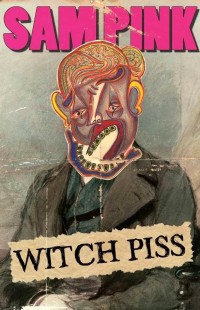 |
Witch Piss
by Sam Pink
Lazy Fascist Press, 2014
112 pages / $8.95 buy from Amazon
|
1. Lot of 40s get drunk in Witch Piss.
2. So, take a pull.
3. King Cobras to be specific.
4. King Cobras are dirt cheap at just $1.99.
5. It’s hard to get an idea of the narrator.
6. Early on, he decides to be a ‘yes man.’
7. “I decided then to only ever encourage people, no matter what they wanted to do. To get through life by saying yes to everything, so no one could say I didn’t get what I wanted, and also so nobody would dislike me.”
8. Most everything he says is deflective in this way.
9. The reader does, I think, get a glimpse of the narrator when he shares his thoughts every now and then.
10. “Imagining myself enlarged, inhaling the smoke off a burning cop as he scream ‘no no no’ – unable to even touch his agonizing face because his skin’s so blistered.”
September 18th, 2014 / 5:18 pm
25 Points: Crystal Eaters
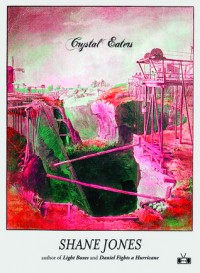 |
Crystal Eaters
by Shane Jones
Two Dollar Radio, 2014
172 pages / $16.00 buy from Two Dollar Radio or Amazon
|
0. (is) The number of fucks Shane Jones gave when he wrote Crystal Eaters.
1. Like let’s be honest. Crystal Eaters really, is Shane Jones’ giant middle finger to the publishing industry and I love it. (Like, New York City, aka: where the big book-type stuff happens). (*cough* *cough* Penguin Books *cough*).
2. I like that Crystal Eaters was released via a small indie press like Two Dollar Radio and not Penguin Books. Really. And I don’t know why.
3. That’s a lie.
4. Actually, I do know why.
5. When Shane Jones wrote that article about his shitty experience with (publishing and editing) Daniel Fights a Hurricane, I kept thinking to myself: so, for his next book, is he going to try and come up with something super-boring and ultra-generic/fake for the suits so they will sign him for another deal or is he just going to keep doing his own thing and not sell out?
6. Crystal Eaters pretty much answered my question.
7. Really, for me, the experience of reading Crystal Eaters felt a little like watching Alejandro Jodorowsky’s Holy Mountain, in the sense that it is a contemporary fable “of what social engineering caused by greed has done to the modern world, but shows us how to live and not give in to a material world.”
8. (Isn’t it weird how the IMDb synopsis for Holy Mountain just blends beautifully with/and works as a sort of faux-narrative for Crystal Eaters?)
9. The cover, I love. It’s this highly colour-fucked version of Elias Martin’s pen drawing of the Dannemora mine circa 1780-1800. (Or, at least, what I think looks like a highly colour-fucked version of Elias Martin’s pen drawing of the Dannemora mine circa 1780-1800).
10. And it’s neat to think that the art for Crystal Eaters isn’t anything custom-made (like the covers for Light Boxes and Daniel Fights a Hurricane) but something that comes from something that already existed in this world prior to Shane Jones ever even coming up with Crystal Eaters.
September 16th, 2014 / 2:30 pm
25 Points: New Tab
 |
New Tab
by Guillaume Morissette
Véhicule Press, 2014
224 pages / $19.95 buy from Véhicule Press or Amazon
|
1. Morissette’s second full-length is set in a hip neighborhood in Montreal. Characters drink cheap beer, ignore their parents, promote cinema.
2. As an American, the most striking cultural moment in this Canadian novel was when two of the characters discussed, without guilt, never having seen The Shawshank Redemption.
3. New Tab tells the story of roommates born on Craigslist—their complex negotiations with landlords, utility companies, each other.
4. The narrator Thomas, a writer in his 20s, sulks through a dayjob designing video games for palmheld devices. At night he sneaks beers into dance clubs and hosts house parties. He attends a Creative Writing Program where he befriends the hard-partying, socially uninhibited Shannon. He falls in love with Romy, a walking distressed sweatshirt. Recalling a breakup conversation with Romy to Shannon, Thomas admits: “it’s like we were talking about golf.”
5. While reading this novel I kept thinking of my mother: Girls grow up faster than boys do.
6. New Tab is a page-turner.
7. I read it on vacation. I also read other books. I kept swiping out of those books to get back to New Tab.
8. I read on beer-stained hammocks and undercrowded chicken buses. I read in a colorful doorway and at a taco bar where body-obsessed Australians were puking up cheladas. I wanted to read New Tab when I couldn’t digest soccer. Like on July 4th during a long lunch when it took me the whole meal to realize Germany was in brown and the French were in black.
9. Morissette has a considerable talent for dialogue, and by that I mean everyone is written the same way.
10. I was eager to read New Tab after reading Morissette’s first book, I Am My Own Betrayal. I remember being deeply moved by this thought in the poem “Vaster Emptiness Achieved”:
We write poetry, people hate us, do we really have to hate each other also?
September 9th, 2014 / 1:46 pm
25 Points: Wish I Was Here
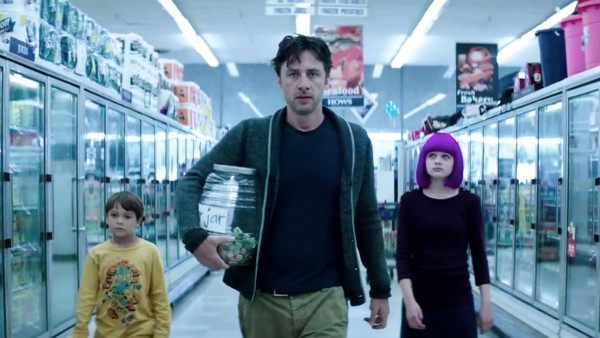
1. I cannot explain how excited I was to see this film. I watched Garden State and listened through the new soundtrack to prepare for, what I figured was going to be, an emotional experience.
2. The opening monologue was a little unnecessary. (I think he says the same damn thing, like, three times throughout the whole film.)
3. Zach Braff must be one of those “California Dads” who yell obscenities in front of their children, smoke weed in the drop off lane in front their kid’s school, is an unemployed “artist,” and is constantly having an existential crisis.
4. Zach Braff seems uncomfortable with being Jewish.
5. Things I didn’t expect to see in this film: Zach Braff masturbating.
6. This is the most attractive I’ve ever seen Kate Hudson.
7. Thought it was cool when I realized that Zach Braff’s son, Tucker, (played by Pierce Gagnon) is the “Rainmaker” from Looper. (How the hell did he get into this movie?)
8. Zach Braff clearly has daddy issues. (See Garden State for further evidence.)
9. Can’t believe Zach Braff doesn’t at least have a part-time job or something. His father pays for his children’s schooling, his wife brings home the bacon, and I guess Braff just sits there and studies his lines all day.
10. What I learned from this film: God doesn’t care about your dreams.
September 4th, 2014 / 2:26 pm
25 Points: On the Road
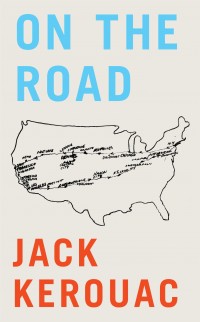 |
On the Road
by Jack Kerouac
Penguin, 1999
304 pages / $17.00 buy from Amazon
|
1. First thing I read by Kerouac was On the Road.
2. After that I read Dharma Bums, Big Sur, Mexico City Blues and a lot of other Beat shit (the most obscure of which was this poet Bob Kaufman who didn’t write his poems but walked up to ppl in cars at stop lights and spouted them then and there. After JFK died he went into a 10 year silence. When it ended the first words he spoke were: “To all those ships that never sailed” and then some more. I got that quote transcribed on my iPod. The iPod broke last summer.)
3. Big Sur is my favorite. The last few lines – that turn, that blink – I want it to be true and I think it is.
4. I first read On the Road my junior year in high school. It was just what I needed. I was bored. I called it depression at the time, but really I was just bored. I wanted to get my kicks.
5. When I got to college and read more “literature,” I grew wary of my early infatuation with the Beats. It seemed juvenile. I was eager to reread so I could dismiss it.
6. Then I reread it my junior year in college and I still liked it.
7. Dean is a crazy motherfucker.
8. I want to “sweat” like Dean. Of all the words I got from Kerouac (“blow,” “ball that jack,” “kicks”) I think sweat is my favorite. Dean gets going a hundred miles an hour just sitting there talking, scheming, licking his lips.
9. I’m not sweating. When I do sweat I don’t sweat for the reason Dean sweats. I sweat because its hot out or I’m nervous.
10. On the Road is very much of its moment: cars, San Francisco, the attempt to lay naked the psyche.
September 2nd, 2014 / 1:15 pm
25 Points: Boyhood
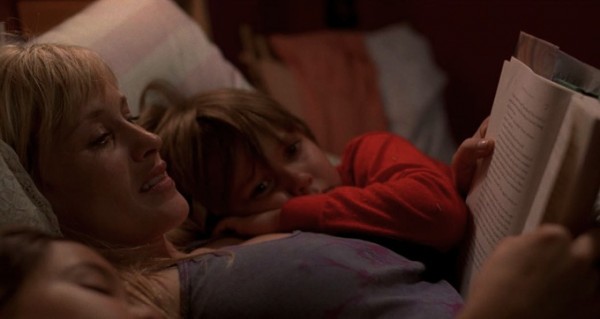
1. Boyhood resists most attempts to analyze it outside the circumstances of its creation. Richard Linklater has filmed a group of actors every year or so for more than a decade, collecting episodes that tell the story of a young boy, Mason (Ellar Coltrane), and his family. The success (and the complications) of this approach and the events depicted on-screen compete for our attention, inasmuch as we can separate them. There’s no easy engaging with Boyhood purely on the level of plot and character.
2. Linklater’s experiment gives him creative latitude with the coming-of-age story that storytellers don’t always have (or don’t always grant themselves). Mason’s mom (Patricia Arquette) marries and divorces an alcoholic, then marries and divorces an alcoholic once again. In another film, this instance of repetition might play as laziness on the part of the filmmaker; in Boyhood, it plays as a function of the film’s verisimilitude. (‘That kind of thing happens in real life,’ etc.)
3. Boyhood also complicates the manner in which a viewer distinguishes a performer from his or her character, especially in the case of the film’s child actors. We are seeing these people grow up—quite literally, if only to a point. This is unsettling at times, seeing the continued physical development of a person without having any insight into his or her actual life. And Boyhood is much better at persuading us to invest in what’s on-screen than the latest item on your Facebook newsfeed about a distant cousin’s kids.
4. Between Boyhood’s documentation of the year-by-year aging of its young actors and the film’s general verisimilitude, Linklater’s decision to preserve—on film—Ellar Coltrane’s unfortunate late-teens facial hair is at once cruel and perfectly appropriate.
5. The choice also demonstrates the perils of verisimilitude. We don’t often see facial hair this ugly in cinema; underdeveloped in a manner that makes it also appear somehow unclean, a manner that communicates its own basic misguidedness. Although Coltrane’s wispy attempted goatee makes contextual sense, it also registers (perhaps too intensely) as an aberration.
6. Boyhood really only becomes a film about boyhood after an hour or so. Until that point, the film’s attention belongs to Mason’s family as a unit. Of course, many young children spend more time with their siblings and/or parents than older children do. But I missed the focus on Mason’s larger family once it was gone. A curious viewer might wonder when and how Linklater decided on the boy as his subject, when he decided on his film’s title, etc.—again, even matters of plot will likely lead the curious viewer back to thinking about the film’s production. The conceit is inescapable.
7. A curious viewer might also wonder if Linklater merely felt more comfortable telling the story of a young, male aspiring artist than he did telling a more holistic family story—or if he worried that audiences wouldn’t turn out in the same numbers for a similar movie about a young girl.
8. Patricia Arquette in particular has an arc that’s an arc as legible as Mason’s and arguably more compelling. Linklater never abandons Arquette’s character as she navigates higher education and single motherhood, but it’s a real sadness that the movie becomes more conventional in its focus as it goes on. We can see other films within this one, and that sense of possibility is bittersweet.
9. Though in fairness to Linklater, if one looks at the range of films he has made while not attending to Boyhood—the Bad News Bears remake, A Scanner Darkly, Bernie, Before Midnight—then the narrative coherence and tonal consistency of Boyhood is remarkable, whether or not the film becomes another story of a young white dude finding himself.
10. Mason’s father (Ethan Hawke), a wannabe musician, comes and goes during the first years of Mason’s life we see onscreen. He’s a consistently inconsistent presence, someone whose life as an artist has not gone as planned—which makes his scenes valuable counterweights to later scenes of Mason discovering his own artistic ambitions.
August 28th, 2014 / 2:17 pm
25 Points: Black Cloud
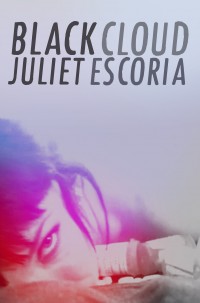 |
Black Cloud
by Juliet Escoria
Civil Coping Mechanisms, 2014
144 pages / $13.95 buy from Amazon
|
1. For some reason, I find this book really blackly funny sometimes. Maybe this is a strange reaction, I don’t know. More on this later.
2. Some of it is a bit like those bits in Breaking Bad where Jesse ‘falls of the wagon’ and goes back to taking drug and his house reflects it. I thought those bits in Breaking Bad were ok so this is a compliment.
3. This makes me think about something that may be culturally different between drug cultures in the US and drug cultures in the UK. In the UK, apart from in the eyes of the tabloid media, the law, etc., pretty much all drugs such as amphetamines, MDMA, weed, coke, acid, even, are all pretty much seen as sort of fairly clean-living party drugs and only heroin and, probably, crack are sites of visceral misery-literature style affairs, sites of crack-dens, heroin hangouts etc. The party drugs are just fine and clean-living things to anyone initiated into them with no sort of self-hatred or self-development or depression surrounding them necessarily because that’s reserved just for heroin and crack alone in the UK. This is my experience anyway but maybe everyone else in the UK would disagree. It just makes me wonder about the cultural differences as far as drugs are concerned and this book is a great example of that. Why not be honest about a common drug culture in US literature as this book and most Alt-Lit does, it screws up all those ‘wholesome’ Christian-Right bullshit images of religious-corporate America so that’s a good thing.
4. A point related to this. 12-step therapy seems different here in the UK compared to the US but also pretty similar. I like to feel these cultural differences.
5. Points 3 and 4 are maybe a thing for Alt-Lit more generally rather just this book but this book does do a good job of exemplifying something that I’ve been trying (and probably failing to articulate) and how wrong I was. More on this later.
6. “Therapists have looked at me, their eyes pleadingly wet and round, and said that growing up in a household like mine must have not felt that strange because it was all I knew. I can’t say this was true for me, not quite, because I do remember the pliancy of things, how nothing ever felt like it was happening at the right time or would stay standing up”. This is one of my favourite lines in the book because it’s also happened to me, as I grew up in a similar situation as the character in this story/author (the membrane is thin in this book, I’m guessing) and it feels true and I know it to be true and what more can you want sometimes from fiction if not some kind of truth?
7. The films that accompany this book are fucking ace by the way. Search them out on Vimeo. They’re some of the best films I’ve seen accompanying a book. I like films that accompany books. These are quite Lynchian at times and other times like a Kate Bush video somehow.
8. “Then my mother took me across the hall, closed the door, turned on the record player, Jane’s Addiction (I still hate that band)…” This is my second favourite, no my equal favourite, line in the book (from the same story – maybe I’m biased, maybe it’s why I said I found quite a bit of this blackly funny?) again because it is so true. I must be older than Julia because mine was Bob Dylan and Neil Young both of which I like now, wounds heal occasionally or sometimes you realise that it was just two contexts mixing up in an unfortunate way. Childhood memories are like this (good or bad ones, although in reality they’re always mixed) and she captures it beautifully and economically in that simple Jane’s Addiction detail. I’ll vote for this book all day on the strength of that detail.
9. This entire book isn’t blackly funny to me, by the way. Although, I wasn’t being flip when I said that, some of it is (but maybe I’m biased towards it). It couldn’t be blackly funny throughout to anybody. Some things are very sad in it, occasionally brutal. The ambivalence of life is herein. It oscillates at times, like most of, like some of, life does between extreme visceral misery and extreme visceral joy.
10. If you want poetry, consider the comparison between the two images of a mother on page 57 — one where she is modelling in a magazine and the other where she is “dirty and buzzing in the bright morning light” READ MORE >
August 26th, 2014 / 1:24 pm
25 Points: Go to Work and Do Your Job. Care for Your Children. Pay Your Bills. Obey the Law. Buy Products.
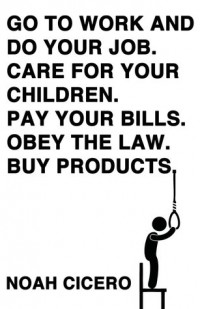 |
Go to Work and Do Your Job. Care for Your Children. Pay Your Bills. Obey the Law. Buy Products.
by Noah Cicero
Lazy Fascist Press, 2013
188 pages / $12.95 buy from Amazon
|
1. Still one of the best titles of any novel, ever.
2. This book is in two parts. Part 1 is narrated by a reasonably bland, vaguely liberal character named Michael who starts a job at a ‘treatment centre’ (for treatment centre read prison) complex called NEOTAP. Part 2 is narrated by NEOTAP IT employee, work colleague and soon to be girlfriend Monica.
3. The whole thing is a mish-mash of different genres, different registers, narrative structures, etc., and is largely concerned with the kind of Orwellian power of the NEOTAP system.
4. The NEOTAP system is, roughly speaking, an analogy for American (Global?) Capitalism and its ‘5 pillars’ (the five pillars of the book’s title). I was pleased that it was only a lightly fictionalised dystopia as there is little need to overly fictionalise something that very much seems to me to be the dystopia of contemporary western capitalist reality.
5. I’m pleased young Alt-Lit people/novelists are engaging with these kinds of things. It gives the lie to any notion that Alt-Lit is merely just a narcissistic pose (it is sometimes) but clearly there are more possibilities for it and this should be embraced.
6. With this in mind, I’m going to suggest this book is a great starting point towards reading more about how the advanced capitalist system works. You know how they like to say marijuana is a kind of gateway drug to other ‘terrible’ drugs, well this book is a gateway drug to the following (see points 7-11).
7. Read this book then read Orwell’s 1984 (which is a bit out of date actually and can sometimes become a kind of carnivalesque pressure valve type situation that posits a clichéd ‘Orwellian’ dystopia that can be re-co-opted by a strand of the entertainment industry who make it so cartoonish that it somehow becomes part of the horror genre and risks missing out on the original points that Orwell was trying to make. The general principles remain sound though).
8. Kafka’s The Trial (similar situation to point 7).
9. Some basic Marxism (you might think this is ‘old’ but a lot of it is more important than ever).
10. Current articles about how ‘The Internet of Things’ will benefit insurance companies and socially engineer us more than we ever imagined.
August 14th, 2014 / 2:30 pm
25 Points: Her
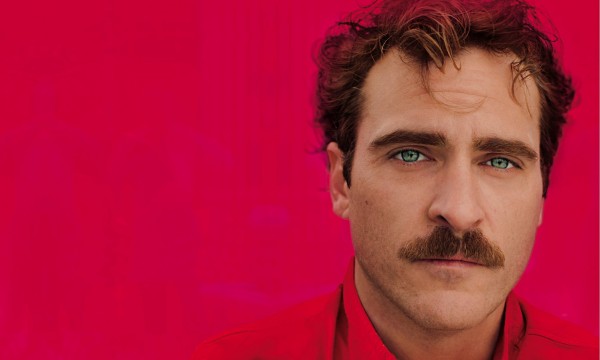
1. Joaquin Phoenix’s mustache first attracted me to this film.
2. The year 2025 seems like a very lonely, interestingly fashionable time.
3. People are so lazy in 2025 that they hire writers to compose love letters for them.
4. Joaquin Phoenix has a picture of a naked, pregnant woman on his phone.
5. Who gets off by being strangled with a dead cat?
6. Joaquin Phoenix needs to stop going after terrible women.
7. Life lesson from this movie: don’t fall in love. Ever.
8. This film reminded me how lonely I am.
9. Realized that Spike Jonze and I have a similar vision of a day where it becomes fashionable to sport a mustache once more.
10. Samantha and all the other Operating Systems reminded me of a friendly version of Skynet.
August 12th, 2014 / 3:15 pm
